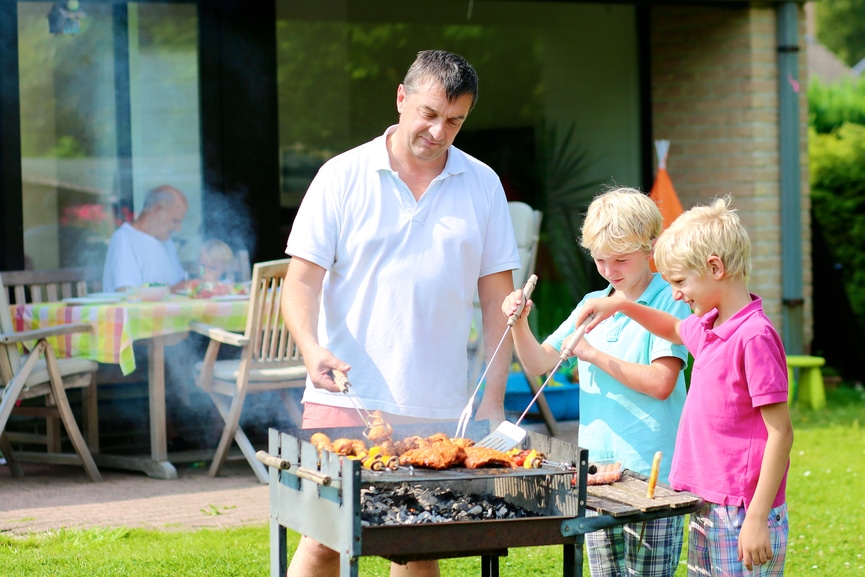
24 Jun The First Family Holidays and Major Events after a Divorce
After a divorce, both spouses will inevitably move on. Remarriage will occur, and the children will gain a new stepparent(s). Life in a blended family can be challenging for a child, as well as the parent, at first, but if the situation is approached with love and compassion things should work out.
While entering this situation may be challenging for the family at first, it is important to realize that your family structure is not completely unique. In fact, blended families are not all that uncommon in the United States whatsoever. In an estimated 65% of remarriages partners bring children from a prior marriage, which results in the creation of a blended family. In fact, the creation of blended families is so common that it is estimated that up to 2,100 new blended families are being formed in the United States every single day. It is predicted that due to marriage trends of frequent divorce followed by remarriage, blended families will eventually become the predominant family structure in the United States.
Although they are not as uncommon as sometimes believed, blended families are not without their problems, statistically speaking. Unfortunately, children of blended marriages have been reported to be up to three times more likely to require psychological counseling than children from other family makeups. This stat might seem scary at first, but if you look at it optimistically, its message boils down to this: give your children the compassion they deserve when entering this new and challenging situation. Children have little say in the living matters of their pre-adult lives, so making sure you do not ignore their needs is of utmost importance.
Preparing yourself to approach each new day in a way that will build the strength of your new blended family will help you create a loving home environment. One of the most stressful times for you and your children in this new scenario will be the first major events and family holidays you plan. Knowing how to navigate these events in a way that keeps everyone comfortable, open and non-aggressive will ensure that you do not begin your new family life with a bitter incident. To help you prepare for these stressful, but hopefully happy times, here are some dos and don’ts to consider when planning a blended family event after a divorce.
Dos
One of the most difficult things for your children will be seeing their new stepparent as an equal. Additionally, it will likely be difficult for your new spouse to feel entirely comfortable disciplining and communicating with their new stepchild.
Establishing a unified parenting and discipline approach before ever planning any significant events can make the whole party/vacation go a whole lot smoother. Massive get-togethers and foreign trips can be stressful in their own right, so being confident that your new family can communicate in a healthy, and effective manner is a necessity.
Before you can achieve the above step, however, you will need one key attribute: patience. Patience is the key to navigating the tumultuous waters of raising and forming a bond with a stepchild. Unless you get lucky, a stepchild is likely to see you as at least slightly threatening in the beginning, as you represent a part of their life that may make them feel insecure.
Understanding this is important, and having the patience to learn and readjust in your relationship with them every day will help you build the kind of blended family bond that you desire. Bringing this patience to the first major events your family attends will help ensure that any major conflicts are avoided.
Don’ts
Badmouthing your stepchild’s other parent and their spouse will do nothing more than make you seem untrustworthy. Even if the parent/spouse in question is a piece of work, avoiding constant badmouthing can help you become a supportive and trustworthy parental figure. Additionally, in the case of future family events, you may be forced to interact with the very people that you are badmouthing. Learning how to deal with them in a healthier manner is essential for the well-being of both you and your children.
Practicing this respectful behavior not only in the presence of your stepchildren and new spouse, but in the presence of other people as well, can help prepare you to lead a life that is focused on a much more important group of people: your new blended family. This same strategy applies to parents dealing with their own biological children’s parent within the blended family structure.
Sometimes a situation can be difficult to navigate without outside help. If you are having major difficulties building a bond of trust and love in your new blended family, it may be useful to seek professional help. Never avoid seeking outside help, as simply ignoring a dysfunctional home life will just lead to a snowball effect of issues becoming worse and worse. Hiring a family therapist professional or seeking support from local community organizations can be an excellent way to start building a positive blended family environment.
While these tips provide a few helpful starting points, you will ultimately have to access your own situation to decide what route is best to take in building your new family’s relationship. Communication is key to navigating this new bond effectively, so never fail to ask the hard questions to your new family members. Finally, always remember that you are not alone and that there is always hope for a stronger family situation.

